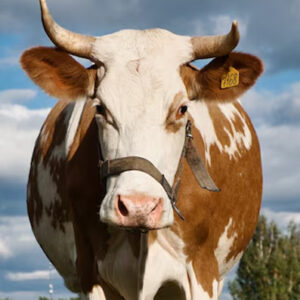Boasting a wingspan almost as wide as Tom Cruise is high, the giant golden-crowned bat looks terrifying when it’s flying spread-eagled through the air, its skinny furry body emphasizing the enormity of its wings. And when its roosting, it looks like a vampire, cloaked by its rubbery black cape.
Despite its imposing size, the fruit-eating megabat – part of a species native to the Philippines – is harmless and makes no attempts in attacking humans, who encroach their habitat and illegally hunt them for fun or food, placing them on the list of endangered species.
Viral images of these innocent, endangered creatures sparked both interest and fear in people who were shocked by their size and predatory appearance.
When the first images went viral, they were described as “human-sized” bats – but there was an unfortunate description causing both confusion and fear.
So, before we delve into learning more about these unique creatures, there are a few clarifications to make. Firstly, they are not “human-sized” unless you are using a very generous interpretation and comparing them to a ”small child” rather than an average adult human.
Remember when I told y’all about the Philippines having human-sized bats? Yeah, this was what I was talking about pic.twitter.com/nTVIMzidbC
— hi monica (@AlexJoestar622) June 24, 2020
The giant golden-crowned bat is one of the largest bat species in the world and has a wingspan of about 5-foot-6, which can easily carry its small body, ranging in size from seven inches to 11.4 inches and weighing less than 3 pounds.
The fig-loving bat, with its head wrapped in a furry golden crown, is a nocturnal herbivore, foraging at night for roots, fruits and vegetables.
Though other types of flying fox megabats exist in Asia, Africa, and Australia, the golden-crowned flying fox (Acerodon jubatus) is found exclusively in the jungles of the Philippines, often living in colonies of up to 10,000 members.

During the day, it can be found snoozing, hanging from its clawed toes, high in the treetops with a bunch of its friends. Sometimes the giant bats will also slumber with its smaller cousins, the large flying fox, which has a wingspan of less than five feet.
Unlike many other bats, giant golden-crowned flying foxes don’t rely on echolocation, instead using sight and smell to navigate the skies.
Tireless in its efforts combating deforestation, the flying fox plays an important role in the multiple forest ecosystem, redistributing fig seeds after it feeds, contributing to reforestation across the Philippines.

Unfortunately, the more the bats work, the more humans destroy.
According to Bat Conservation International (BCI), “more than 90 per cent of the Philippines’ old-growth forests have been destroyed, and the species has completely disappeared from several of its old roosting sites on multiple islands.”
Destruction of its natural habitat and hunting, for sale, sport and personal consumption, are causing a rapid decline in the golden-crowned bat population, that dropped by 50 per cent from 1986 to 2016. Since, the species is listed as endangered on The International Union for Conservation of Nature (IUCN).

While the bats are protected under the 2001 Philippine Wildlife Resources Conservation and Protection Act, the law isn’t enforced.
In fact, even though the majority of the animal’s roosts are in protected areas, they are still killed en masse. In a terribly cruel and inhumane practice, hunters shoot the slumbering creatures while roosting, injuring a number of them, many with toes still clutching the branch, preventing them from dropping when they are killed.
And even though humans are a huge threat to the bat population, the flying foxes aren’t shy and can be found in forests near villages or towns, perched along roads or simply hanging around in populated areas where they feel comfortable. However, able to make the distinction between safe and dangerous areas, they will relocate and roost in areas inaccessible to humans, like on slopes more than 1,000 feet above sea level.

These bats are also extremely intelligent creatures, comparable to a dog, and research shows they are quick learners with a significant capacity to remember.
A study about operant conditioning reveals that hand-raised flying-fox bats were successfully trained to pull levers for a juice reward. More importantly, three and a half years later, when the bats returned to the familiar experimental chamber, they immediately pulled the levers, knowing they would be rewarded.
Bats have those unique physical features that can be perceived as unsettling or frightening to some people. Their leathery wings, sharp teeth, and large eyes may contribute to a sense of fear or unease.
They have a bad reputation for being bloodthirsty creatures, but it’s important to note that only three out of 1,300 bat species are known to feast on blood. If you can get past the initial shock of its creepiness, the golden-crowned flying foxes are actually quite adorable!
It’s really sad to know that these innocent and intelligent animals are being killed and losing their homes to deforestation. If you agree, share this story and help bring awareness to this endangered, harmless species!
Credit: https://en.newsner.com/animals/these-bats-look-terrifying-but-theyre-gentle-creatures-struggling-to-survive-poaching-and-deforestation/









